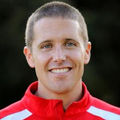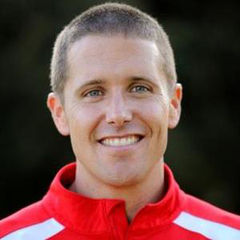As I look back on my more than 20 years as an exercise professional, I feel fortunate to have been able to make a living by inspiring others to live a healthy lifestyle. This invigorates and excites me as I look forward to the many lives I’ll have the opportunity to positively impact in the next 20 years. In looking back, however, I can’t help but think about the things I wish I knew when I started my career more than two decades ago.
As I look back on my more than 20 years as an exercise professional, I feel fortunate to have been able to make a living by inspiring others to a healthy lifestyle. This invigorates and excites me as I look forward to the many lives I’ll have the opportunity to positively impact in the next 20 years. In looking back, however, I can’t help but think about the things I wish I knew about a career as an exercise pro when I started more than two decades ago.
While I value the lengthy process of trial and error I experienced, in sharing some of the insight I wish I knew at the onset of my personal-training career, I hope to empower new health and exercise professionals to create an even greater lifelong impact.
Whether you’re thinking about becoming a health and exercise professional or you’re in the early days/weeks/years of your career, here are 20 years of insight that you can put into practice today.
Business and Marketing Skills are Critical
When I entered the personal-training profession, I was under the impression that as long as I knew a lot about exercise programming, I could go far in my career. I quickly learned, however, that to attract clients, I would have to stand out in the crowd.
I struggled with this until I discovered the importance of marketing my services, both within the gym I worked at and to the local community. For me, this came in the form of creating valuable, consistent content (including blogs, videos and local talks) and making it relevant to potential clients in our gym and beyond.
I had to get comfortable meeting and talking to new people both in and out of the gym. I also learned that the way I looked, spoke, and acted was all part of a personal “brand,” so I had to decide what I wanted that brand to represent and exactly who it was designed to attract.
Once I established some marketing basics and was able to fill my schedule, I discovered the inherent limitations of exchanging time for money. As a personal trainer, I was paid only for the hours I worked. There are, of course, only so many hours each of us can work in a day. If I ever wanted to help more people and make more money, I had to figure out how to better leverage my time.
For years, both my income and impact were relatively stagnant. I was impacting the same number of people’s lives and getting paid the same to do it. If I was sick, or if a client went on vacation, I didn’t get paid. As life expenses continued to increase, I wondered if I’d be able to afford to remain in my chosen profession.
Fortunately, I had surrounded myself with mentors who showed me how to leverage my experience and knowledge to create other ways to earn income and positively impact lives. I learned how to create and market products that could help thousands of people. After applying numerous times to become an industry speaker, I was finally accepted, and I identified ways to increase the value of my services so I could increase my rates.
This expansion of my business capabilities allowed me to not only continue to positively impact my current clients, I was now able to impact thousands more. Most importantly, I no longer had to wonder if I was going to be able to stay in the profession.
Investing in Continuing Education is Necessary
When I began personal training, I was proud of the knowledge I had gained in the pursuit of my four-year exercise science degree. Furthermore, I had completed a year-long internship opportunity as a resident strength and conditioning coach at the Olympic Training Center in San Diego, Calif., and had earned several certifications from esteemed organizations. What more was there to learn?
The answer? A lot!
My resistance to learning from others in my first few years significantly hindered my career growth. It wasn’t until I found strength in admitting what I didn’t know that I was able to embrace the process of evolving my knowledge and approach.
I discovered that the more I was willing to learn from conferences, mentors, books and other resources, the more opportunities I had to grow and evolve. While often requiring my limited resources of money, these investments continually created dramatic returns.
Success doesn’t come from staying the same; it comes from being able to adapt and change. I eventually established an annual goal to learn more, be more and serve more than I did the year before.
You Can’t Do It Alone
Early in my career, I possessed a “me against other personal trainers” mindset. After all, we were competing for clients. Why would I share my knowledge or insight with them? Why would I want to listen to what they say? I was right, they were wrong and when clients realized this, they would choose my services. I’m embarrassed to say I embraced this mentality during the early years of my career.
Not surprisingly, I started to feel like I was on an island. Without the ability to reach out to others in a similar situation, it was difficult to grow. When it came to helping my clients and growing my business, the only knowledge I could draw upon was my own. I was, however, reluctant to embrace the idea of seeking a mentor. I felt like I would be bothering them. Fortunately, it was the advice of a mentor that made it possible for me to break this “island” mindset.
Instead of hoarding my knowledge and experience, my mentor urged me to share it with other professionals through speaking, blogs and other platforms. I started with the gym where I worked. In the beginning, I was reluctant because I didn’t want to help out my competition. I quickly realized that the more I shared, the more they would share with me, and I was able to better serve my clients and grow my career more effectively.
I ultimately created a network of professionals from all over the United States, which over the years expanded to include exercise professionals from nearly every continent (sorry Antarctica!). The willingness to share my knowledge and listen to others has provided endless opportunities for both my clients and me.
Listening is Crucial
When I started personal training, I couldn’t wait to share my knowledge. After all, I believed that this was primarily what clients were paying me for. Of course, this mindset created a very one-sided conversation between my clients and me—“If you want to lose weight, here is what you have to do”—and that was the end of it. When clients wouldn’t do what I told them to do, I was perplexed. I judged them. I thought of them as lazy. Any behaviors that fell short of the plan were obviously a failure of willpower and commitment, and I would turn a deaf ear to their excuses.
After a few years of frustration, I made an important discovery. When clients show up to a personal trainer for the first time, they are in a very vulnerable position. They are essentially admitting defeat and need help from this often younger, fitter person. The goals they are comfortable sharing often have more to do with convention than actual value-based need.
For example, “I want to lose weight” is an expected goal associated with seeking the advice of a personal trainer. A new client is generally comfortable sharing this goal. However, a new client would be a lot less comfortable sharing something like “I want to feel self-worth again. My relationships and mindset have been on a negative spiral for years and my health has been paying the price.”
If a health and exercise professional is only willing to hear “I want to lose weight” and go from there, they are missing an opportunity to address what a client really wants and needs. In the previous example, a personal trainer who truly listens to their client during their first few weeks together and makes observations independent of judgment can tune in to the importance of what the client really wants and needs. The personal trainer can then adapt their expectations, programming, and approach.
It’s likely that by merely showing up to sessions is a powerful step in the right direction for the client. Maybe they need to laugh and have fun with movement instead of adhering to regimented protocols. When a trainer can key into what a client really wants and needs, the process of attaining the more objective goals becomes easier and more sustainable.
As I look forward to another 20-plus years as an exercise professional, I hope this look back has given you some insight on how you can learn more, be more, and serve more every year.




 by
by 





 by
by